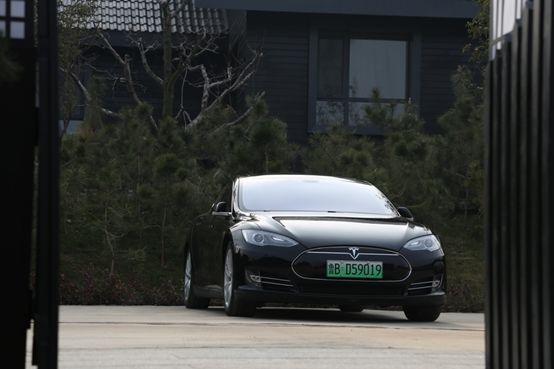I borrowed a car, a Tesla Model S P85 to be exact. Besides the super niche first-generation Roadster, this 2014 Model S is considered the starting point for many people’s familiarity and exposure to Tesla. Over the course of seven days, I drove it for 1,737 km, including three long-distance trips exceeding 400 km, through snowy weather, misty fog, and heavy traffic. I hope that this article can provide some reference for those who are interested in purchasing an electric car, a Tesla, or even a used P85.
Range Capabilities and Range Anxiety of a Five-Year-Old Tesla
I believe that many friends and I share the same question: how far can a five-year-old Tesla go? Here, the usage environment needs to be explained:
- Shandong Province
- February
- Temperature ranging from -2°C on a snowy night to fully covered on a sunny winter day at 10°C
- Air conditioning set to 23°C with the fan on the second level
- Suspension at its lowest setting
- Full coverage on highways, national (provincial) roads, and urban areas
- Standard energy recovery
Before taking the car out, I checked its range. The NEDC standard range for the P85 model is 502 km, which doesn’t seem too far off even after five years. However, due to the discounts of actual usage and the influence of low temperatures in northern winter, it’s still uncertain how far it can go.
After getting in the car, I glanced at the average electricity consumption displayed on the dashboard, and my jaw almost dropped: nearly 350 Wh/km. At this rate, the full tank would only last a little over 200 km, but I still had more than 400 km to drive on the highway that day.
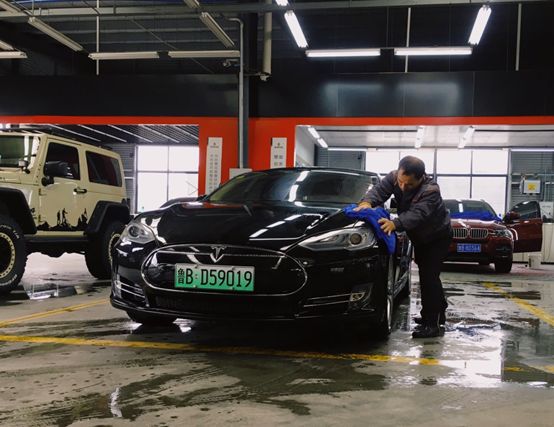
After turning on the “typical” mode, the displayed full range is 382 km, which relieved more than half of my worries. Unfortunately, the weather was against me – when the temperature is below 0°C, the full range displayed on the dashboard typically drops at a rate approximately 1.3 times that of the distance traveled in the first third of the journey. However, while the temperature continued to decrease, the full range displayed became more accurate and formed a more or less 1:1 relationship.
With a distance of more than 400 km to travel on a full charge, I stopped to charge twice along the way, although one stop would have been enough. However, range anxiety still made me choose the safer option, which will be discussed in the following sections.
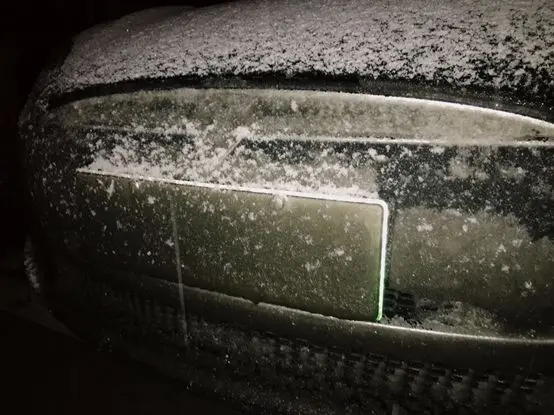 The high-speed driving on the first day took over 7 hours due to weather conditions with a total of 400 km traveled. The electric vehicle consumed more energy compared to a fuel vehicle. However, in the following days, with the rise of temperature and no more extreme weather, the energy consumption and the displayed range were further improved.
The high-speed driving on the first day took over 7 hours due to weather conditions with a total of 400 km traveled. The electric vehicle consumed more energy compared to a fuel vehicle. However, in the following days, with the rise of temperature and no more extreme weather, the energy consumption and the displayed range were further improved.
On the return trip, with a full battery charge, the displayed range was 382 km, which corresponded one-to-one with the actual driving range, even slower in decreasing than the displayed range. Additionally, it only took less than 5 hours to complete the same journey, basically the same duration as a fuel vehicle.
Moreover, it is worth mentioning that Tesla’s built-in navigation system accurately corresponds the remaining miles to the displayed range, which exceeds all the electric vehicles I have driven.
After 7 days of comprehensive testing, this 5-year-old Tesla P85 can achieve a real-world comprehensive range of 350-380 km in northern winter. Adjusting to the “standard” range mode with a full battery, the displayed range is 477 km. By combining with the NEDC range of 502 km, the battery loss should be around 5%, which is not high for a 5-year-old car with 30,000 km on it.
Although the winter range is a bit less than 400 km, it still makes me feel pleased. After all, this is what has been really achieved, rather than a number from the Ministry of Industry and Information Technology, let alone some 60 km/h constant speed range value.
By the way, speaking of the constant speed range of 60 km/h, I once cruised at 60 km/h on a certain highway, and when waiting at the red light, I took a picture of the energy consumption of nearly 50 km on the instrument.
149 Wh/km was achieved under the condition of low temperature below 10℃ and with two levels of air conditioning on. Based on this calculation, the 60 km/h constant speed range of the P85 can easily exceed 600 km in ideal conditions. However, I don’t know why Tesla didn’t put a “600” on the back of the car at that time. That was a foolish mistake.Let’s talk about range anxiety after range. For me, range anxiety is an innate feeling that emerges when I embark on a long journey in an electric car, no matter its range.
The sources of anxiety actually come more from the scarcity and uncertainty of charging facilities, with only a minority related to the vehicle’s own range. When driving a gasoline-powered vehicle, I am willing to look for a gas station when the range is less than 100 km or even lower. However, when driving an electric car, this number has to be higher, because the quantity and reliability of charging stations are much lower than gas stations.
During the seven-day period, I had three long-distance trips exceeding 400 km, two of which were from Qingdao to Qufu and back. Before my first long-distance journey from Qingdao to Qufu, I felt very uneasy because it reminded me of a very uncomfortable memory. In early 2017, with similar temperature, I traveled this route with a Zotye E200, and the time it took was incredible – two days and one night.
Although this Zotye, with its industry-regulated range of only 155 km, cannot compare with the Tesla, whose value is several times higher, the various charging station damages, faults, and extremely low power experienced along the way left me traumatized. Has the situation changed in the two years since then?
Fortunately, State Grid has proven that my concerns are unnecessary. I have used the State Grid fast charging station for multiple charges during the week, and it has been able to start up successfully and enter fast charging mode quickly. The various damages and faults that occurred before have not appeared at this time. When I was charging at the Huangdao service area, I even encountered staff patrolling and maintaining the charging station. In short, the charging network’s reliability has improved significantly in two years.
Although the charging stations are more reliable, there is still a big gap in charging power between State Grid fast charging stations and Tesla Superchargers. The highest SOC can only reach about 50 kW between 20% and 80%, and it is more common to be below 45 kW. In contrast, Tesla Superchargers can reach a charging power of up to about 120 kW.
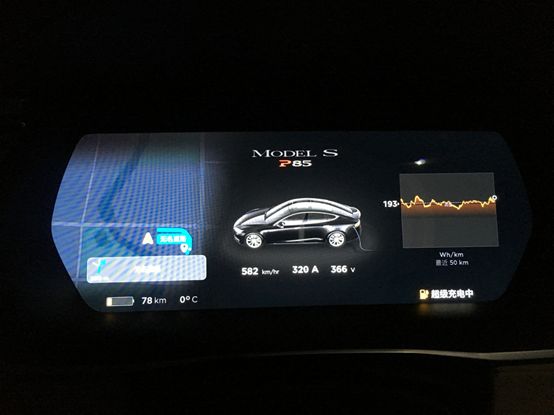
In addition, there were two charging failures this week. The first was on Tesla’s slow charging station. The dashboard showed that it was unable to charge, and the fault persisted after repeated plugging and unplugging twice. After communicating with Tesla staff, it was learned that the voltage of Tesla’s slow charging station may be too low.

The second failure occurred at a service area on the G3 Beijing-Taipei Expressway, where all five State Grid fast charging stations failed to start and reported faults. After communicating with State Grid customer service, it was learned that there were some problems with the adapter between the charging stations and the Tesla charging port at that service area, and there have been several complaints from Tesla owners about the inability to charge there.
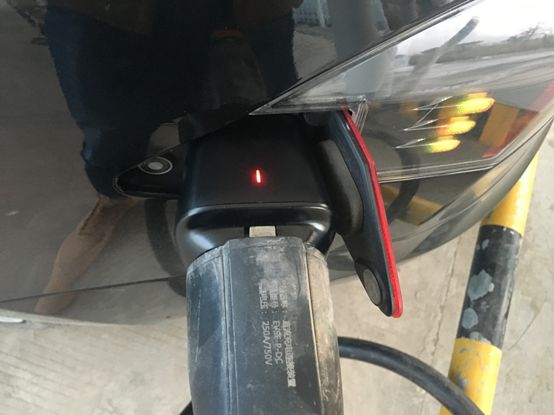
Overall, this electric car with an actual range of nearly 400km did not give me much trouble, even on long-distance trips. By properly planning the charging time and taking a rest, the trip can be very comfortable.
However, the lack of charging stations, charging station failures, or being occupied by fuel vehicles still occur at high-speed service areas. When planning the route, sufficient consideration must be given to possible accidents and enough range should be reserved to ensure that one will not be stranded on the highway.
Is poor workmanship the real Tesla?
Recently, the delivery of Model 3 in China has triggered a wave of criticism of Tesla’s workmanship and minor issues. Apparently, only continuous minor issues and poor workmanship are the signs of a genuine Tesla. Well, now I will talk to you about the workmanship and the problems I found on this five-year-old Tesla.
On the day of pickup, when I opened the passenger door, I found that the plastic threshold had curled up. The staff checked and found that a clip had broken. After replacing the clip in five minutes, everything was OK.
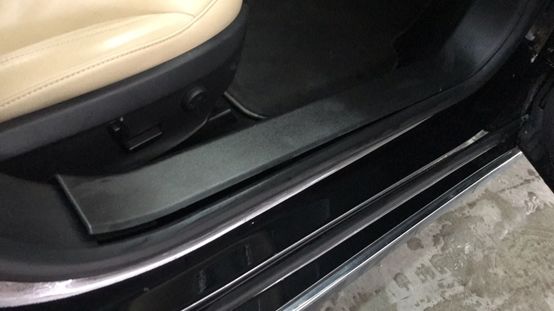
Next, there was the taillight. When I took delivery, I found that the light strip under the left rear taillight was not lit, but I did not find the reason why until after a snowy run when it was discovered that the taillight had water in it.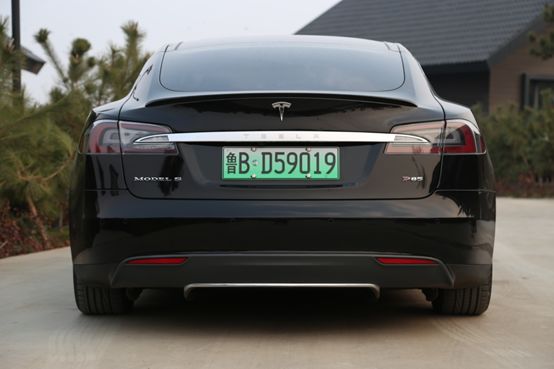
In terms of workmanship, although there is still a big gap compared to the top luxury brands at the same price, it is not that terrible. The key is that the interior is already extremely simple, and even if the assembly process is slightly inferior, it is not too obvious.
However, an interesting thing is that the multifunctional steering wheel buttons and rollers seem loose, but the gear lever and window control keys on the same model of Mercedes-Benz are tightly fitted, well…
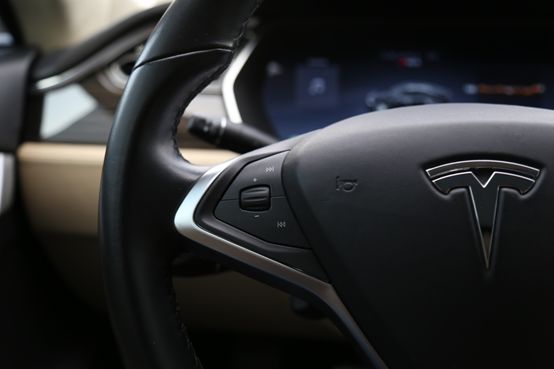
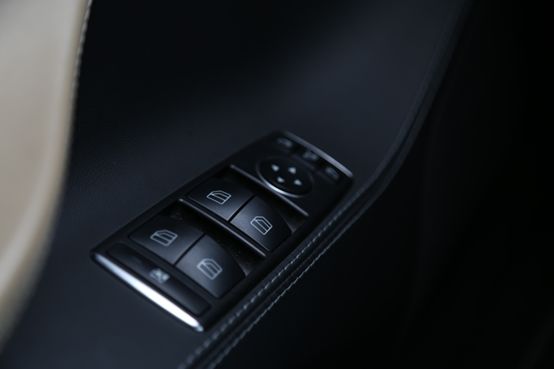
Tesla does have shortcomings in workmanship and quality, although the materials are high-end enough and the fit and finish are top notch, the loose buttons, some difficult doors, and occasional minor issues can be disappointing, especially when the owner brags to friends about their high-tech car, and their friends hit the nail on the head about the workmanship flaws, which can be embarrassing…
Is the Missing Autopilot like Losing Soul? How does it Drive?
This initial Model S did not have Autopilot, which really made me feel sorry, because AP is simply amazing for long-distance driving. Before receiving the car, I test drove a Model 3 with the latest AP hardware, easily following and stopping, parking smoothly, and automatically changing lanes. And all I can say is “amazing”, and then return to this P85 with only cruise control, and I have to say that Tesla seems to have really lost its soul without Autopilot.
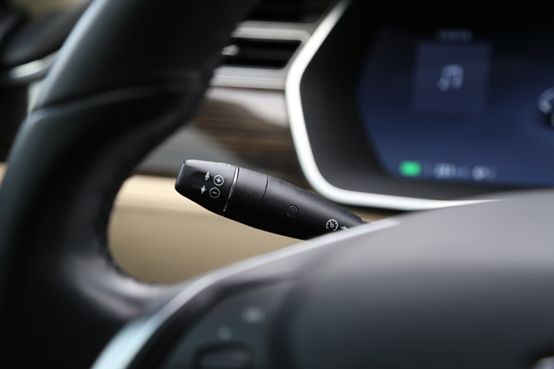
Since there is no Autopilot, what else can make me excited about this Tesla? Hey, don’t forget it’s a P85, and this P is not easy to ignore!
Whether it’s the carbon fiber small spoiler at the rear of the car or the red-painted opposing four-piston calipers in the wheel hub, they all tell you that this is a high-performance Tesla! With 422 horsepower and 600 Nm of torque, the 0-100km/h acceleration time is 4.4 seconds. Looking at these numbers on my phone, I’m excited again. Who cares about AP! This acceleration is enough to make me happy.The keyboard always seems shallow when it comes to reality’s face slaps…
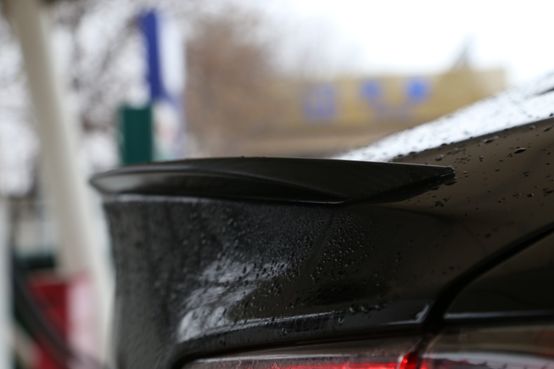
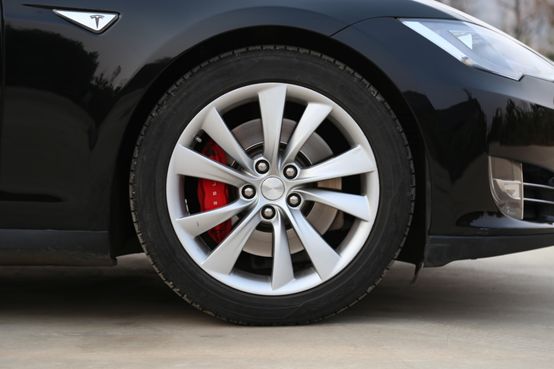
The rear-wheel drive is too slippery, especially when it has been raining for a few days and the ground is still wet. The 600 Nm electric rear-wheel drive is really difficult to control. If you press the accelerator a little more, the ESP light will keep flashing, and the rear wheels will start to sway left and right. The 245mm wide tires are too narrow for it.
For safety reasons, I did not try full acceleration, and I did not experience the 4.4 second acceleration. In terms of acceleration experience, it is not as good as the Model 3 Long Range Four-wheel Drive. Therefore, I have a small suggestion for friends who want to experience electric car acceleration: buy four-wheel drive!
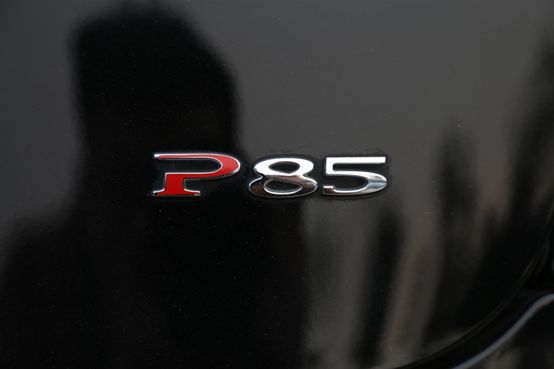
If you use this P85 as a city commute, you will have a pretty good experience. It is particularly quiet at low speeds, and there is no annoying electric current noise entering the cabin. However, once the speed exceeds 70 km/h, wind noise will be heard constantly, which is related to its frameless doors. If you want to be cool, you have to pay the price.
There are three steering modes to choose from, but personally, I feel that they are all a bit too light. The chassis gives me a good feeling. Even if I occasionally turn corners at high speeds by adjusting the air suspension to the lowest setting, I can get good support, and the body posture is also good, which is completely sufficient for daily driving.
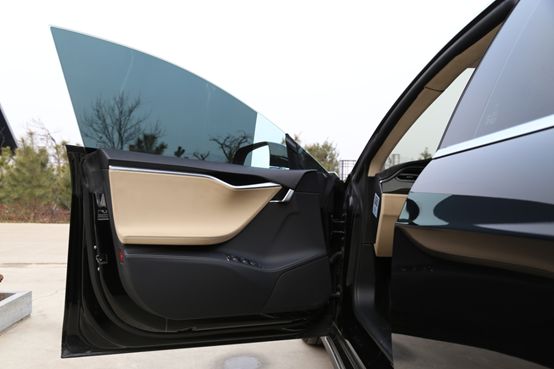
As an electric car, energy recovery cannot be avoided. Tesla’s energy recovery is relatively strong in standard mode, which was a bit uncomfortable for me, who usually drives gas cars. However, after getting used to it, I am more willing to use energy recovery for deceleration, and can basically achieve one-pedal operation.
However, for passengers, this may make them a little dizzy. At the moment when you release the accelerator, the regenerative braking begins to work, but the feeling is a bit abrupt and not as progressive as when you step on the brake pedal. Therefore, when I have passengers on board, I slow down gradually instead of releasing the accelerator completely. This is slightly different from driving habits of gas cars.
When it comes to differences in driving habits, Elon and Tesla have always followed the first principle of “finding solutions from the essence without using analogies or referring to any experiences,” which will inevitably create a feeling of being different from other products. Model S and X retain some differences, but Model 3 is fully released.
Even the earliest Model S still has many different designs from other cars. It may seem confusing when driving it for the first time, but you will soon get used to it once you leave it. For example, the position of the wiper, the startup method, and the parking method are all different.
In addition, the chrome base of the rearview mirror must be criticized. When driving against the sunlight, the light will be reflected into the driver’s eyes through the chrome.
Compared to a general car, Tesla is more like a technological product, and the updating speed of technological products surpasses that of industrial products by many. Therefore, even though this five-year-old P85 seems to lack a lot of technological halo compared to today’s Tesla, its high-performance still makes it interesting.
For Tesla, I recommend buying new instead of old, and it is best to choose the “full self-driving function.” Although many contents are still futures, after all, this is an essential part of it.
Is “Old” no longer fashionable?
Model 3 is a young and fresh meat with a new interior design. Model X has cool falcon wing doors. Then, is the old Model S no longer fashionable? Emmm… it seems a bit old indeed. Someone even compared its front face to Xiong Er.
Hahaha, the “mouth” before Facelift was indeed the same as Xiong Er’s. Tesla’s chief designer Franz once said “We adopt a design language that gives it a timeless feeling.”
My Model S must never lose.Actually, placing the Model S in today’s world might make some people tired of its aesthetics, but certainly not to the extent of calling it ugly. Franz is best at using soft lines to outline the body of the car – on the Model S, there are no straight lines that are popular among car companies nowadays to show off power, but rather a softness combined with an aggressiveness which still looks amazing today.
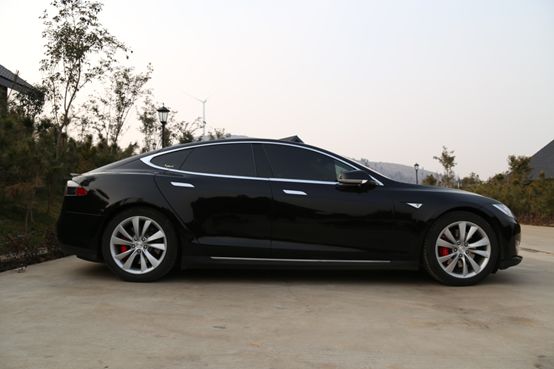
With such short front and rear overhangs, and lowering the suspension to the lowest point, I’ve been imagining all along how handsome it would be on a set of 21-inch carbon black double-turbine wheels. However, the 19-inch 45-series flat tires have already made me nervous enough, as I carefully avoid large pot holes – if it were on 21-inch wheels, tire punctures would probably become commonplace.
The P85’s lighting configuration was not considered low in those days, and the brightness and penetration were also acceptable, but now even cars costing hundreds of thousands have full LED headlights, making it appear a bit outdated.
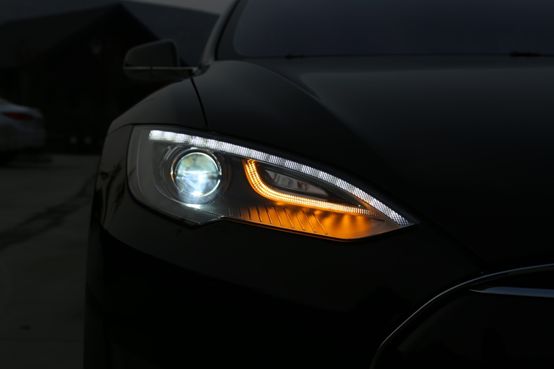
Everyone has seen the interior design a thousand times, and the novelty has basically worn off. Especially after seeing the new design language of Model 3, the Model S and X look somewhat mediocre. However, three things are worth mentioning:
-
The center console is tilted towards the driver’s side for easier reading of information;
-
The navigation and reverse image display are very clear;
-
Adjusting the air conditioning airflow in the second-level menu is somewhat inconvenient;
-
Elon and Tesla’s playful nature is fully displayed in the Easter eggs – a car can still be played with like this.
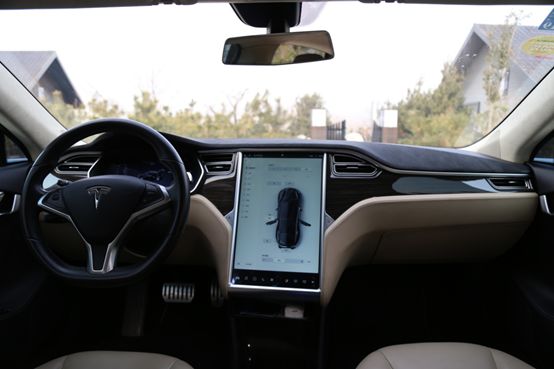
Actually, some of the older Model S cars are still stylish, but we’ve become accustomed to its design style, losing the stunning feeling it once had. However, for cities below Tier 3, Tesla is still attracting attention – as you can see:

At the red light, the driver of the car behind suddenly opened the door and frantically took pictures, and finally told me that this car is really good-looking, until the light turned green before rushing back to his car…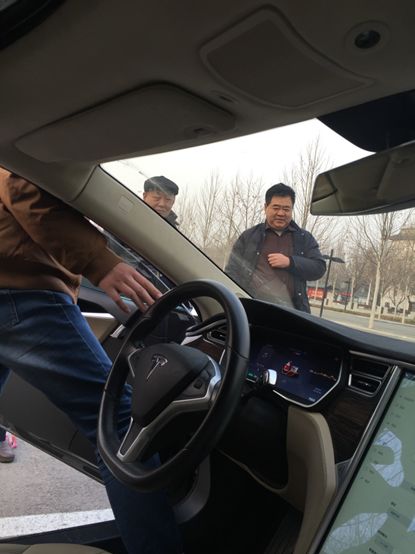
At the Supercharger station in Qufu, while charging my Tesla, I chatted with a few elderly gentlemen who were out for a walk. When I left, they even waved goodbye to my Tesla.
Comfort for How Many Passengers in a Model S?
– How many people can the Model S seat?
– 5 people.
– Can they sit comfortably?
– 2 people.
The seats in the Model S cannot be described as comfortable, but at least the front seats can be adjusted to reach the level of a typical sports sedan. Finding a comfortable sitting position is not difficult. But for the rear seats…
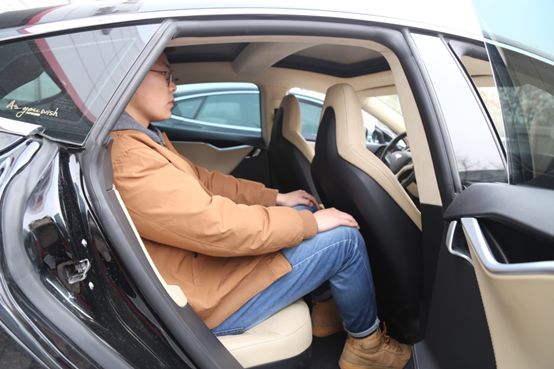
I’m sorry, it’s hard to talk about thigh support, and the hair and the sunroof kiss freely. Moreover, the seat cushion is almost as hard as on most vehicles except sports cars and buses in the same price range. The headrest is just a decoration, and there is no center armrest…Honestly, the Model S is not very friendly to rear passengers.
That’s not very friendly? Don’t worry, there’s more. When I was thrilled with the huge central storage space in the front seat and the rear passengers wanted to curse, there was no storage space with no cup holder, no storage compartment on the door panel. Well, maybe Tesla thought you didn’t need to bring anything when you go out, or you could give your things to the front seat.
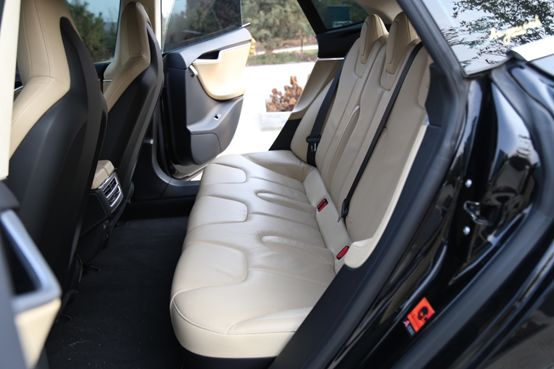
Although the rear passengers are somewhat pitiful, at least their large luggage can be placed in the vehicle. The space of the front and rear trunks makes me feel like I can drive it to run errands just like a “Huo La La” car. In addition, the liftgate trunk is very convenient for loading and unloading items. This advantage of electric vehicles is unmatched by fuel vehicles.
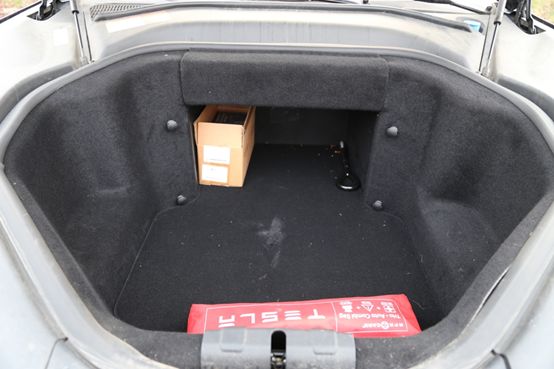
Its mission, both at the time of its launch and presently, is not to carry a family in comfort, but for the driver to tease the accelerator pedal and show off its power while the passenger next to them exclaims, “Wow, awesome!”
In ConclusionTranslate the following Chinese Markdown text into English Markdown text, using a professional approach. Retain the HTML tags inside Markdown tags, and only output the result.
After doing the math, I realized that since I don’t have a charging pile at home, I had to rely on third-party fast charging and Tesla’s supercharging to supplement my car’s battery this week. If I use this Model S for daily commuting, the energy consumption will be around 200 Wh/km, and the cost of third-party fast charging in my area is generally 1.8 yuan/kW·h (excluding parking fees). Based on this calculation, the cost of electricity for the Model S per kilometer is around 0.36 yuan.
Electric cars also require maintenance, although less than petrol cars. Tesla’s official maintenance plan is to have one maintenance session every 12 months or 20,000 km (whichever comes first), with a cost of approximately 2,000 to 3,000 yuan per session. Other costs such as insurance, beauty treatments, and parking are similar to those of petrol cars. Based on one’s own driving situation, an estimated cost of ownership can be calculated.
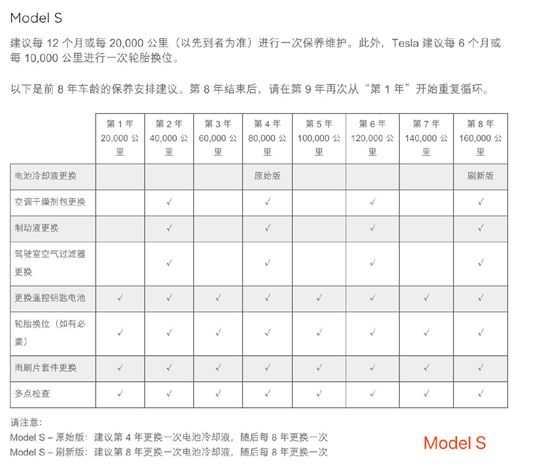
After discussing the expenses, I have three small suggestions for friends who want to buy an electric car:
- Have a charging facility at home.
- Consider climate factors.
- It is best to have a petrol car as well.
I think the first point is particularly important, especially if you plan to buy an electric car with a limited range. Currently, the charging network in many cities is not as developed as the gasoline network, and the quality of charging piles and the surrounding environment varies greatly. Many times, you can only wait in the car while charging.
During one of my discussions on electric cars, a friend who owns a Zotye E200 and does not have a charging facility at home told me that he finds it very painful to experience as he often needs to wait in line for a charging pile, and sometimes petrol cars occupy the charging spot, making it difficult to justify the time and cost.
Even if you plan to buy a Tesla, charging is still an important issue. The Model 3 will be delivered in large quantities, and by the end of the year, a model priced below RMB 300,000 will be introduced. At that time, the Tesla supercharger in China may also experience queues similar to those in the United States. Whether there is a charging facility at home will directly influence the quality of using an electric car.
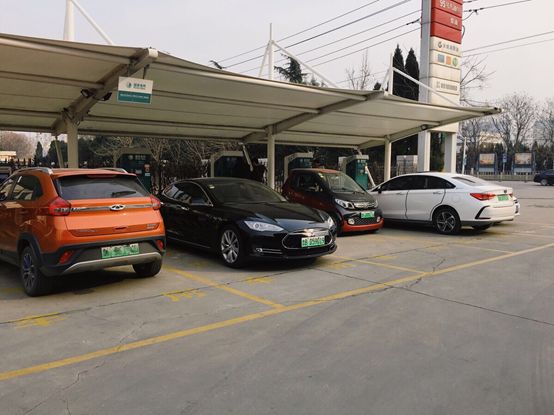
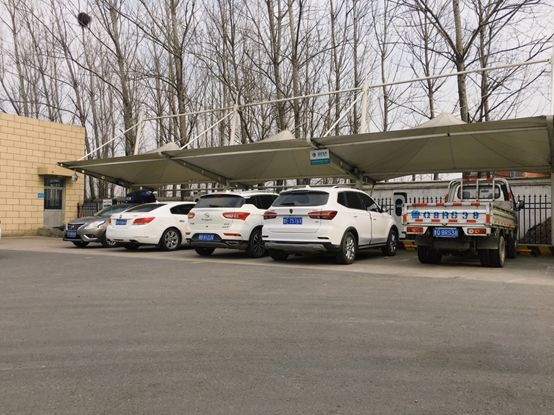 Moreover, if you live in a higher latitude area, you need to consider carefully. Severe cold weather can directly lead to a significant reduction in the cruising range, and whether there is a more suitable temperature is also an important issue when choosing an electric car.
Moreover, if you live in a higher latitude area, you need to consider carefully. Severe cold weather can directly lead to a significant reduction in the cruising range, and whether there is a more suitable temperature is also an important issue when choosing an electric car.
Finally, if you often need to travel long distances, it is recommended to have a gasoline car at home before choosing an electric car. Reasonable combination can maximize various travel needs.
OK, at present, if you have the charging conditions and are not in a perennial low-temperature environment, buying an electric car as the second car at home is actually a good choice. Enjoy it!
Review of the most expensive digital product ever purchased-Tesla Model 3
21 days of picking up Model 3, painful and happy | 42Group


This article is a translation by ChatGPT of a Chinese report from 42HOW. If you have any questions about it, please email bd@42how.com.
